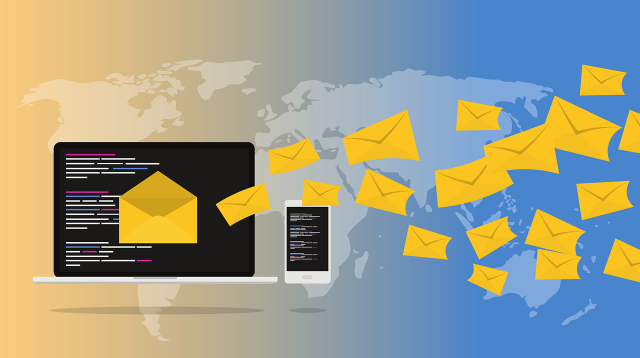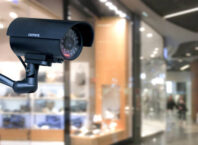Good work emails are professional yet engaging and should represent the sender in the best light without being overbearing. The first thing to remember about work emails is that they are not sales pitches — they simply should invoke trust in the author.
As holds true for any written communication, work emails should be, first and foremost, LITERATE. Regardless of the tone and style, if your work email appears hasty or otherwise rushed, it will send a wrong message and one you will never be able to take back.
Think of work emails as first impressions. According to the Harvard Study of Communications, it only takes seven seconds to make a first impression. Translating that into work emails, how fast does the recipient read?
Even more importantly, how fast does the recipient SCAN your message? Various studies have shown that lengthy content doesn’t get read. Depressing, but still true. That means that if your work email features a typo in the opening line, chances are, you will lose the opportunity to present yourself in the best light.
Satisfying the Criteria
For your work email to be opened in the first place, it needs to satisfy a number of criteria. The first one is: does it appeal to your target audience?
An audience can make or break a purpose. For all your hard work in composing a professional work email, if your audience has been improperly defined, your efforts will be wasted.
Firstly, it is crucial to send work emails only to an audience that is actually interested in your say. Secondly, it will define a style, tone and level of formality.
I.e., a work email targeting your supervisor should be formal and 100% professional, whereas an email sent to a colleague may be less formal and a bit casual.
The second criterion is the purpose of your email.
Why are you sending the email in the first place? Make the answer follow the one-answer rule. Multiple purposes will result in your work email appearing sloppy and unfocused. It will also confuse the recipient, rather than compel them to take the action for which you are hoping.
The third criterion is necessity.
Will your email be welcomed by the recipient? Does it state something that should not be communicated electronically?
Finally, your work email should be suitable.
Communication through email may be convenient, but is not always the best channel to convey a message. I.e., if your email features sensitive information, you may wish to reconsider the communication channel. For example, if you’re a digital nomad communicating across the globe, time may be of the necessity, so a business messaging app like Slack might be more effective.
General Guidelines to Writing Formal Emails
No matter your style and desired tone, the work emails you send should be professional. In other words — formal. Now, there are a number of guidelines to writing formal written forms such as letters, but they do not necessarily apply to online communication.
Remember what you were taught back in your high school days? Formal texts shouldn’t feature abbreviations of any kind, for one thing. In the case of online communication, this isn’t always necessary. Additionally, this may not always apply to workplace communications, especially if the emails are exchanged between colleagues on the same level or team.
The most important thing is to keep true to the form. Uniformly, a work email should hold to the following form:
1. Start with a greeting
2. Follow by thanking the recipient
3. State your purpose immediately below
4. Add closing remarks if you have any
5. Include a call to action
6. Include a proper closing line
7. Use a professional, all-encompassing email signature
It is crucial to keep one thing in mind before you even begin writing a work email. That one thing is called the subject line.
As is the fate of all emails of today, their open rates depend solely on the subject line. In that sense, a work email doesn’t differ greatly from, say, a newsletter, so you pay attention to best practices.
A compelling subject line should be simple and compelling, and yet not disclose the focus of the email. To illustrate, simply recall all those scams about ex-presidents asking you to help them deposit money for monetary rewards. Did you open any of those messages?
We thought not.
Also important to keep in mind here is that most emails are being accessed on mobile devices. Different devices display different subject-line lengths. It is safe to keep to three to eight words. Avoid spam-trigger words such as “urgent,” “important” and similar.
Format, Tone and Style
- ·Work Email Format
Think of your work email as a book. Books are printed as to be effortless to read, meaning they feature plenty of white space.
Online formats commonly follow the same format, with headings, numbering and bullets added where and when appropriate.
Put shortly, a good work email should be easy on the eyes and simple to scan, rather than read.
Tip: if you use copy/paste, make certain to format the text in the email body. Use one font for the entirety of the email. If you wish to underline a point, use formatting methods instead of different fonts.
- Work Email Tone
As we’ve already seen, work emails are similar to first introductions. Remember the seven seconds rule!
Think of scanning and skimming rather than reading first. Once opened, your email should be uniform and consistent in tone.
The tone depends on the target audience. It may be formal, semi-formal and even friendly, but it must always be professional.
Even friendly work emails should not feature all caps, emojis or fun content (i.e., animated gifs and similar). To make important points stand out, use bold, italics or underlining.
Note the difference:
This is a limited-time offer.
This is a limited-time offer.
This is a limited-time offer.
THIS IS A LIMITED-TIME OFFER.
- Work Email Style
As mentioned above, work emails should appear professional. That includes brevity without compromising on the information.
There are many tricks to writing short yet informative letters, many of which fall under the high school stuff mentioned in the beginning. Keep to the old wisdom of your forefathers: avoid all filler words, unnecessary adjectives and, by all means, words like “very” and “really.”
In a Nutshell
As with anything else in business (or in life), writing a stellar business email requires peak performance. As you can see, writing a work email is, in many ways, similar to writing an offer. It is professional, brief, informative and follows a couple of rules in regards to effortless reading.
Therefore, it is best to define the idea you wish to convey, as well as the action you want performed, and then shape it into a polite and professional email.

















































































